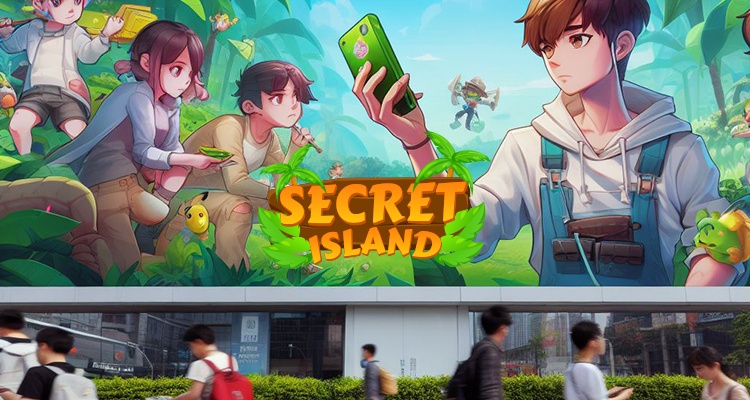The dynamics of the mobile game industry are rapidly evolving. Large-scale mobile game releases are high-stakes investments with pressure to make a profit and it seems this trend has been intensifying. New mobile games are released one after another every year, making the market a red ocean where competition is fierce. Not only are developers working for a slice of the profitability pie, but they’re also competing for user attention and loyalty.
Large-scale mobile game releases
Source: Septeni Global
Overall revenue is increasing year over year and consumer spending is set to reach $108 billion in 2023 but the annual number of mobile game downloads has been dwindling, especially when compared to the pre-COVID era. This inverse relationship between revenue and downloads suggests a shift in user behavior. They might be spending more on fewer games, indicating a preference for quality over quantity.
Since it’s challenging for new mobile games to become hits in the current landscape, a publisher’s existing portfolio is expected to drive revenue. Additionally, with established players dominating the charts, newcomers need to find unique ways to penetrate the market. As a result, recent trends emphasize a greater focus on metrics such as per-user retention rate (RR), monetization rate, and average revenue per user (ARPU) compared to before.
Gaming marketers also face challenges as traditional methods are no longer as effective, demanding more innovative approaches. Emerging technologies, such as virtual and augmented reality, offer new ways for marketers to connect with potential gamers. But with the rise of ad-blockers, data privacy, and changing user behaviors, marketers need to think outside the box. The article outlines how marketers and publishers can work together to navigate a competitive landscape and deliver on important KPIs that help keep games in play.
Virtual reality
Source: Septeni Global
User acquisition vs. brand promotion
In the realm of large-scale mobile game releases, two essential strategies run in parallel: user acquisition (UA) through direct-response online advertising that directly leads to installations and branding promotion to increase game awareness and likability among users.
User acquisition vs. brand promotion
Source: Septeni Global
First, when it comes to user acquisition through online advertising, “high-quality targeting” is extremely important.
As previously mentioned, the market is oversupplied and the cost per install (CPI) to acquire each target user has been increasing every year. Therefore, rather than pursuing high volumes, the focus has shifted towards acquiring users with higher loyalty metrics such as retention and monetization rates.
More than just numbers, it’s the quality of the user engagement that can determine the success of a game. Incorrect targeting could lead to achieving download goals without meeting revenue targets, so capitalizing on the ability to harness data and technology to predict user behavior can provide a competitive edge.
The commercial failure of a game that has been developed over several years with substantial resources and costs is a serious concern for game companies. Recent developments in the platforms hosting acquisition ads have become more programmatic, allowing advertisers to manage campaigns without relying heavily on advertising agencies. But these tools are only as good as the brains and strategies behind them.
Fire Up Your Growth!
Moburst propelled leading brands like Google, Reddit, and Uber to the next level. Let’s ignite your Success journey today!
Claim Your FREE Growth Fuel!The nuances of effective advertising, including aspects such as target selection, generating numerous creative banner and video assets, and ultimately devising a promotion strategy, are intricate tasks. This is where advertising agencies like Septeni Global, with a wealth of experience in managing various promotions, can be beneficial.
Next, branding promotion for expanding awareness and likability requires a structured approach executed over the medium to long term.
Successful mobile games in the past couple of years, such as “Uma Musume,” “Genshin Impact” and “Heaven Burn Red,” initiated discussions and generated fan users well before their release dates. Engaging users early allows developers to tweak and refine the game based on feedback, ensuring a final product that resonates with its audience.
This means that establishing a foundation for a hit is no longer a process limited to the release period itself; it starts years ahead. Designing strategies to gradually elevate user expectations and excitement, through methods like incremental information releases and communication on social media platforms, is crucial. Here, close collaboration between the marketing and development sides within the advertiser’s company becomes vital.
The evolution of advertising methods
The stage where advertising agencies often come into play starts around the timing of pre-registration. And with the rapid increase of gaming platforms, there’s a need for a multi-pronged marketing strategy. From the beginning of pre-registration until just before release, promotions like TV commercials, out-of-home (OOH) advertising, and influencer marketing can be executed to rapidly disseminate information to target users, building anticipation for the impending major release.
It’s crucial to ensure that these marketing messages are consistent across all platforms and resonate with the target audience to be effective. During this stage, it’s more effective to increase the advertising volume and generate a higher number of ad impressions in a short period, increasing the likelihood of users having a positive attitude shift.
OOH
Source: Septeni Global
The pre-release and immediate post-release growth period is a turning point that determines whether high-quality target users can be acquired, thus setting the stage for a stable operational phase. At Septeni Global, we’ve also found that this is a crucial time for game publishers to lean on an advertising partner who is well-versed in generating impactful creative, media planning, and engaging with the right influencers to build an effective campaign.
Entering the operational phase presents many challenges as well. It’s not just about acquiring users but also ensuring they remain engaged and invested in the game. Preventing user churn to competing mobile games and enhancing and maintaining customer lifetime value (LTV) are key goals. The game’s publisher needs to establish a community that sustains user motivation to play the game, consistently fueling engagement with strategies like regular game updates and collaborations with external IPs.
Beyond the initial user acquisition stage, an agency collaborator can also focus on re-engaging dormant or churned users and attracting new users who haven’t yet downloaded the game. Leveraging localized advertising, loyalty programs, and in-game events such as tournaments or special collaboration events can serve as effective strategies to maintain player engagement and touchpoints to incentivize returning players.
Together, we aim for long-term operation and revenue acquisition. To stay ahead in the evolving mobile gaming industry, a harmonious blend of creativity, strategy and technology is key.















